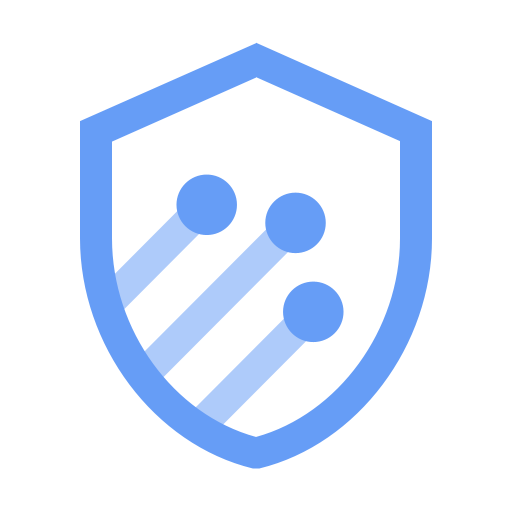Cloud network security
Adopting cloud-based infrastructure requires using cloud network security to protect your data, applications, and systems. But what exactly is cloud network security? Why is cloud network security required—and how is it different from traditional network security?
Keep reading to learn all the answers and best practices to secure your cloud networks. Plus, learn more about Google Cloud's native network security capabilities and how they help you protect your data, services, and infrastructure.
Cloud network security defined
Cloud network security refers to the security measures—technology, policies, controls, and processes—used to protect public, private, and hybrid cloud networks.
What is cloud network security?
Like cloud security, cloud network security refers to the technology, policies, controls, and processes used to protect data and solely focuses on protecting cloud networks from unauthorized access, modification, misuse, or exposure.
Cloud network security forms one of the foundational layers of cloud security that enables companies to embed security monitoring, threat prevention, and network security controls to help manage the risks of the dissolving network perimeter.
Why is cloud network security important?
You're moving beyond a traditional on-premises perimeter when you're operating in the cloud. Whether you’ve moved completely to the cloud, or are using a hybrid-cloud approach, trust in your cloud service provider and trust in your own systems are incredibly important concerns.
When you extend your existing network to cloud environments, it has many security implications. Historically, any on-prem approach involved a distinct perimeter between the internet and your organization’s internal network and a variety of multi-layered defenses like physical firewalls, routers, intrusion detection, and more. But as more workloads and users move beyond your on-prem perimeter, it becomes harder to detect and respond to intrusions using previous perimeter protections to create a secure network.
To keep up with the pace of modern IT environments, organizations need an easier way to deploy, manage, and scale network security built directly into the cloud. Cloud network security enables you to minimize risk, meet compliance requirements, and ensure safe and efficient operations.
Cloud network security benefits
Improved security visibility
Improved security visibility
Cloud-based network security enables centralized security monitoring and management, often from a single pane of glass. Solutions can also integrate with existing on-prem solutions to help reduce the complexity of security across cloud environments.
Policy-based security
Policy-based security
Enforcing security and organizational policies can be difficult, especially if you need to configure, deploy, and enforce them across multicloud and hybrid environments. Cloud network security makes it easier to manage and update granular policies.
Advanced threat prevention
Advanced threat prevention
Cloud service providers invest in the latest technologies, highly-skilled experts, and partnerships with experienced leaders to provide real-time detection and powerful prevention against intrusions, DDoS, and other web-based attacks.
Automated monitoring and configuration
Automated monitoring and configuration
Highly scalable networks require security tools and processes that can grow with them without overburdening security teams. Cloud network security solutions can automate configuration and management, helping to eliminate misconfiguration errors, and maintain control over traffic.
Encryption by default
Encryption by default
Encryption can’t stop breaches or security incidents, but it can limit the damage if something happens. Most cloud providers offer encryption services to protect data at rest and in transit, helping to reduce the potential attack surface and prevent unauthorized access if data gets intercepted.
Centralized, consistent security
Centralized, consistent security
Cloud network security helps centralize protection, offering built-in security capabilities and tools to help you monitor your network activity for potential threats and performance and manage identity and access from a single place.
Cloud network security challenges
Network and cloud security can be challenging for many of the same reasons that cloud computing is so powerful for accelerating digital transformation.
Cloud infrastructure can be scaled up or down automatically without adding additional burden to development or security teams. Technologies like containers, serverless computing, and autoscaling also mean that cloud environments are rarely static and constantly changing according to momentary needs. This is made even more challenging by the increasing popularity of hybrid environments that comprise both on-prem and cloud networks.
It makes getting an accurate sense of overall network security difficult and can make it hard to track down malicious actors as they move between networks, especially if security teams need to switch between various systems and security tools.
In addition, network security in cloud computing is a shared responsibility between the customer and the cloud provider. Shared responsibility models vary according to the provider. As the network owner, you are typically responsible for securing what’s in the cloud—your network controls, identity and access management, data, and applications. It’s important to make sure these duties are clearly defined as any misunderstanding could lead to serious gaps in coverage.
Cloud network security best practices
There are a number of strategies and tools that you can use to secure your network. However, you can simplify your approach by following these cloud network security best practices:
Deploy zero-trust networks
The zero-trust security model means no one and nothing is trusted by default, whether they are inside or outside of your network. Zero trust allows you to shift access control from the network perimeter to individual users and devices.
Secure internet-facing services
In general, it’s always best to restrict access from the internet to your cloud resources unless necessary. However, if you can’t avoid it, you can still limit access with network-level security in the cloud. This includes edge network security with DDoS protection, web application firewall (WAF) policy enforcement, identity-aware control access, and intelligent threat detection with real-time monitoring, logging, and alerting.
Secure connections between all of your environments
Your workloads may reside on-premises, in the cloud, or across multiple cloud environments. That’s why it’s critical to secure connections to your environments to keep your deployments as private as possible to reduce exposure to threats. You can avoid impacting critical workflows using private access options that let cloud-based or on-premises clients communicate and consume with supported APIs and services without an external IP address.
Micro-segment access
Even within your network, it’s essential to regulate and manage communication between applications and services. Micro-segmentation helps contain lateral movement with fine-grained security policies to control traffic precisely if an attacker infiltrates your network. You can also use micro-segmentation policies to isolate critical systems, strengthening regulatory compliance.
Understand your shared responsibilities
To achieve strong network security in cloud computing, it’s imperative to recognize your weaknesses. Understanding exactly what responsibilities are yours and what controls are embedded in your cloud provider’s services is critical. For example, you may want to look for a cloud provider that operates under a shared fate model, where providers offer more comprehensive guidance, resources, and tools to help customers better navigate risk management and security.
Take the next step
Start building on Google Cloud with $300 in free credits and 20+ always free products.
Need help getting started?
Contact salesWork with a trusted partner
Find a partnerContinue browsing
See all products

















